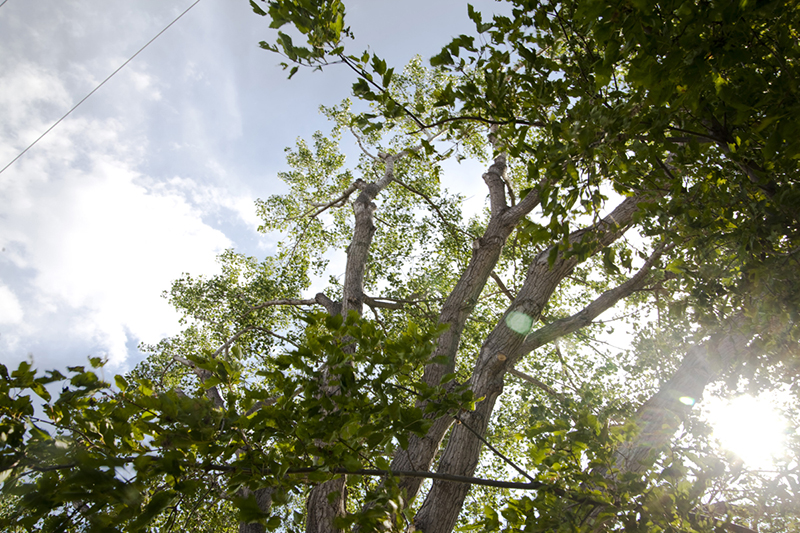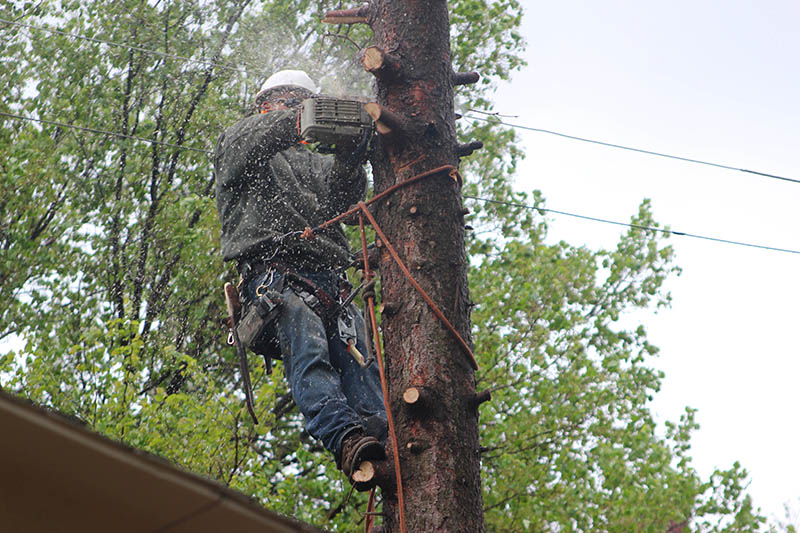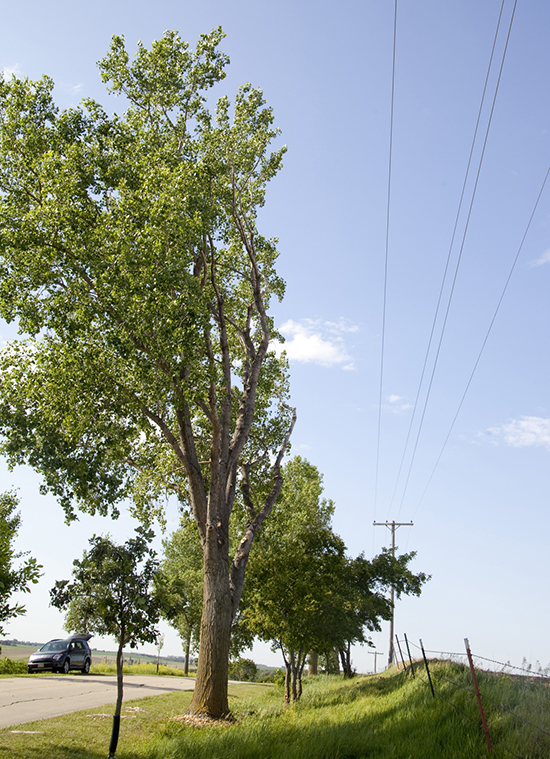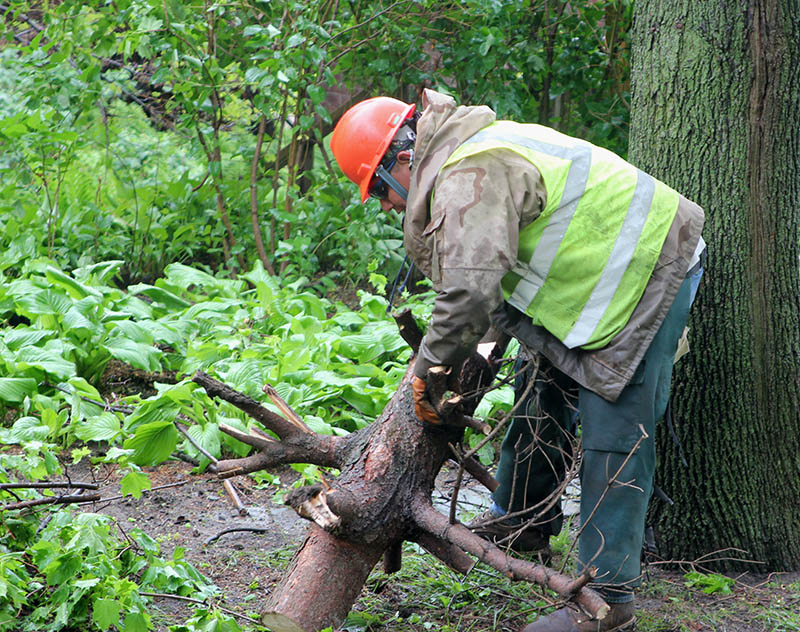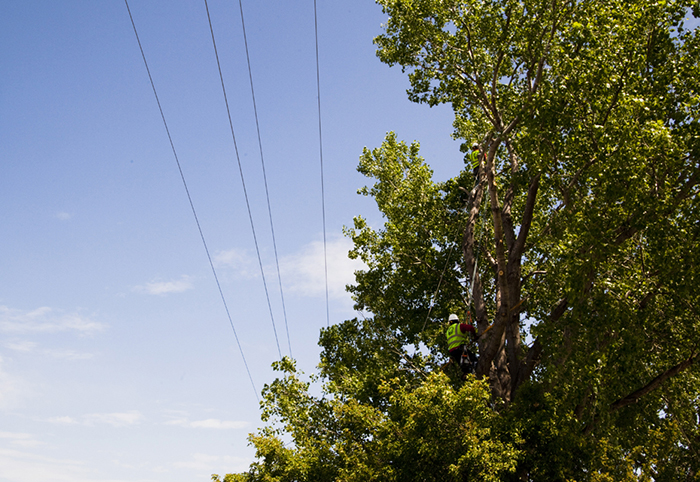
OPPD’s utility foresters keep trees located near power lines from disrupting power to customers. Here’s how the process works:
1. How does OPPD know when a tree needs attention?
- Each year, foresters identify certain circuits that are due for routine maintenance. Once identified, OPPD tree-trimming contractors to go every property on a circuit and determine if a customer’s tree needs to be trimmed at that time to satisfy OPPD’s clearance standards.
- A customer may call OPPD and ask to have their tree inspected for possible tree/power line interference. This generates a service call. The utility inspects the tree and determines what service it can offer at that time, or if trimming the tree can wait until routine maintenance when the whole circuit is trimmed.
- An issue with power quality or outages may also indicate a tree needs to be trimmed.
2. How does OPPD notify customers?
During maintenance or service calls, contractors will first try knocking on the door to speak with a customer directly. If there is no response, they will leave a door hanger, which indicates what needs to be done and why.
From there, a customer may receive a follow-up phone call or message. Tree-trimming contact information is also available.
3. How long until a customer can expect to see a work crew?
The time between notifying a customer and completion of the job depends on factors such as existing workload and weather. Timing can range from a couple of weeks to a month.
4. Why does the tree look funny after it’s trimmed?
Companies trim trees using the natural pruning method. First, the amount of clearance is identified. Then, crews trim back branches to either their point of attachment or an acceptable, healthy existing lateral branch.
This method is a generally accepted industry best practice with guidance from the American National Standards Institute (ANSI) A300 standard, Trees, Shrubs, and Woody Plant Maintenance. Trees typically take on the shape of what is referred to as a “side” or a “V out” style of trim.
While OPPD recognizes that these cuts may not always be aesthetically appealing, this method ensures that OPPD maintains appropriate safe clearance while maximizing the remaining crown of the tree. Of course, the best option may be to remove the tree entirely.
5. Who cleans up?
On routine maintenance jobs, OPPD contractors are responsible for cleaning up all material that is trimmed or removed. They use large chippers or specialized trucks to pick up debris. The crews take the debris to an authorized dump site.
However, cleanup varies during unusual scenarios such as a storm. The branches trimmed and wood cut during this type of emergency work is the customer’s responsibility. The top priority for crews is power restoration.
When private tree trimmers or customers request OPPD assistance outside of what would be considered routine maintenance, they would be required to clean up, as well.
6. When will OPPD be back?
Routine maintenance varies in time from one circuit trim to the next. Some circuits require greater attention, while others can go many years before trimming is needed. When in doubt, a customer can talk to contractor personnel or visit with a forester directly.

Jodi Baker contributes stories to The Wire in addition to serving as a media liaison for OPPD. She was a reporter, working for news stations from her hometown of Omaha to San Diego, prior to joining the utility in 2013. Jodi has a bachelor’s degree in Broadcasting from the University of Nebraska-Omaha, with a minor in Criminal Justice. She’s married with two older children and two younger dogs – Shi Tzu mixes. She loves watching her daughter’s track meets, going to concerts with her husband Dave, who used to co-host a local music video program, and traveling whenever possible.
View all posts by Jodi Baker >


